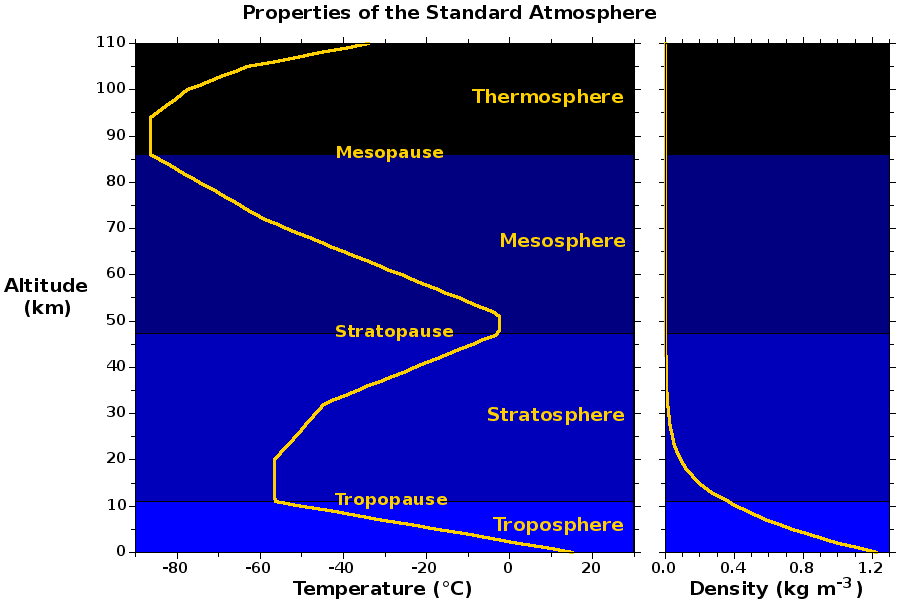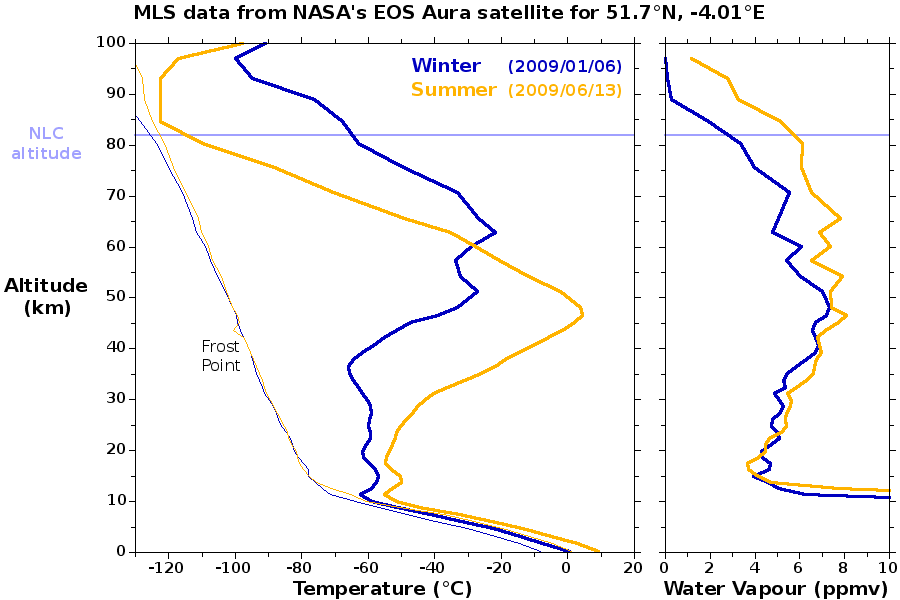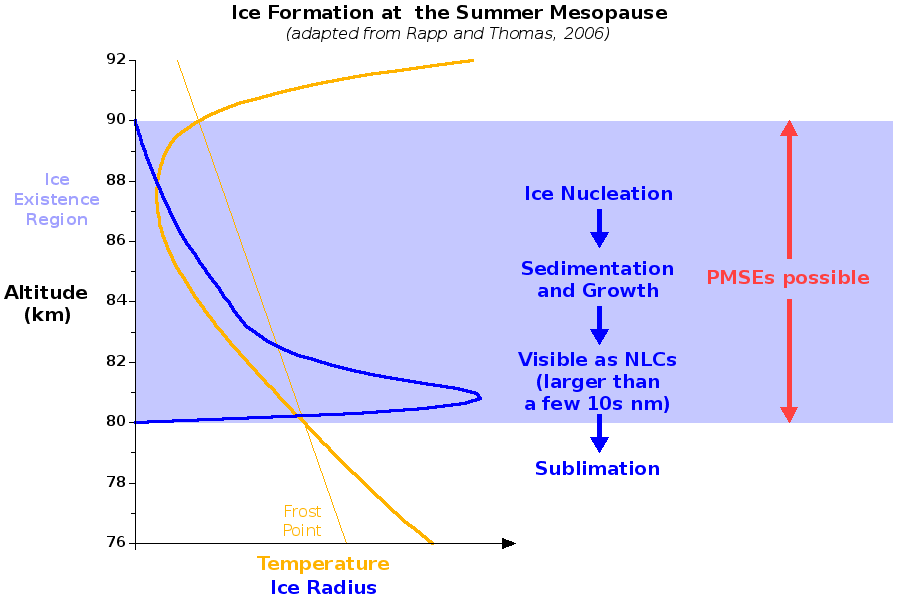
Follow this link to see a larger version of the above image in a new tab.
Noctilucent Clouds (NLCs) are a seasonal wonder of the natural world. They can only be seen from upper-middle and high latitudes during the mid-summer months (between mid May and mid August in the northern hemisphere). They are the result of ice crystals forming at the extraordinarily high altitude of 82 km. This is 70 km higher than virtually all other clouds seen at these latitudes and qualifies as being at the edge of space (the atmospheric density and pressure are approximately 100,000th of their values at sea level). NLCs can only be seen during twilight hours – hence the name noctilucent, which means night-shining. They are referred to as Polar Mesospheric Clouds (PMCs) when they are observed by satellite-borne instruments.

Follow this link to see a larger version of the above image in a new tab.
The vast majority (98%) of atmospheric water vapour is confined to the troposphere (which occupies approximately the lowest 12 km of the atmosphereat middle and upper latitudes). The overlying stratosphere (which occurs between altitudes of approximately 12 and 50 km) and mesosphere (approximately 50 to 90 km) are extremely dry, containing water vapour concentrations of below 10 parts per million by volume (ppmv). Nevertheless, during the mid-summer months the altitude where NLCs form becomes extraordinarily cold (and slightly more humid) as a result of air rising (and cooling adiabatically) over the summer polar region. Ice crystals can form where the temperature drops below a frost point of approximately -125 °C.

Follow this link to see a larger version of the above image in a new tab.
The ice crystals can only be seen as NLCs if they grow larger than a few tens of nanometres (nm) in size. This requires the cold conditions to extend over a depth of at least several kilometres and there being sufficient water vapour available. Even if the ice crystals do not grow sufficiently large to be visible, they can give rise to the radar phenomenon of Polar Mesosphere Summer Echoes (PMSEs).
Internal links:

 THE NERC MST RADAR FACILITY AT ABERYSTWYTH
THE NERC MST RADAR FACILITY AT ABERYSTWYTH